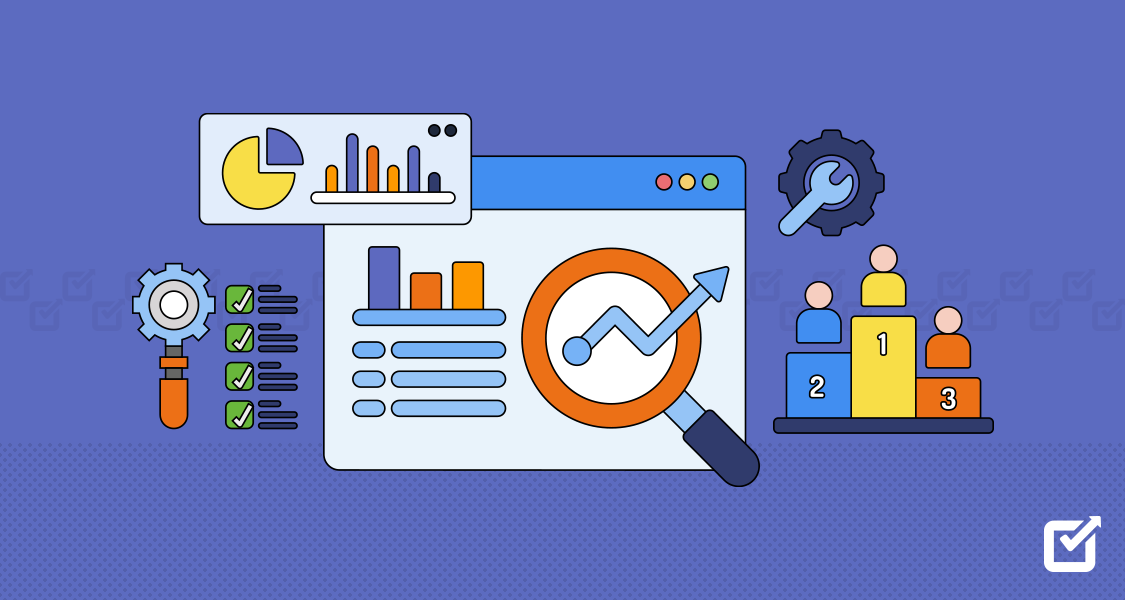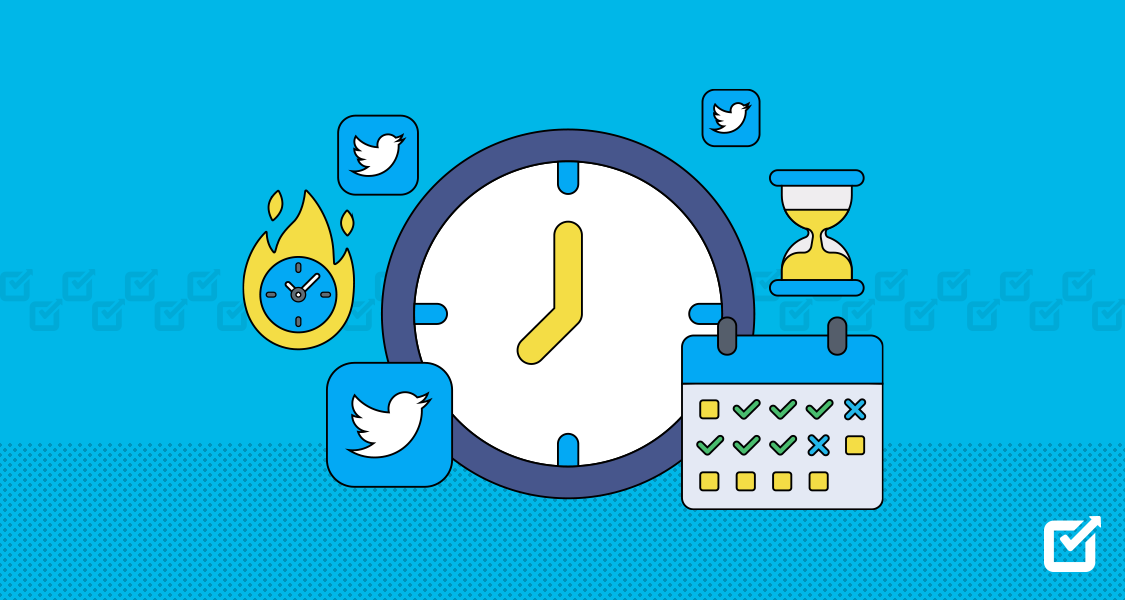Are you having trouble keeping up with how fast things are changing in your industry? Do you really want to be as successful as others?
Listen up and learn how to get ahead…
Research shows that 94% of companies try to understand what their competitors are doing. Whether you’re just starting or have been around for a while, growing your business often means understanding what your competitors are up to.
But how can you figure that out? That’s where competitor analysis tools come in. There are lots of different market research tools out there. Figuring out which is perfect for your business can be tricky.
In this detailed guide about the best tools for competitor analysis for 2024, we’ll talk about all the different options available. These tools are designed to help you find out what’s popular in the market, what customers like, what your competitors are good at, and where they could be better. So, get ready—it’s time to check out the tools that could really make a difference for your business.
And if your goal is to stay ahead of the competition, you might want to check out Social Champ. This tool can help you streamline social media management.
Why Competitor Analysis Tools Are Important
Competitor analysis tools quietly gather information about your competitors, helping you understand your challenges. Let’s talk more about why these tools are so important:
- Spotting Opportunities: These tools help you see what your competitors are doing and what they’re not doing. Maybe they’re not paying attention to a particular group of people or missing out on using a social media platform. Those gaps allow your business to step in and do something different.
- Checking Performance: Such tools for competitor analysis let you compare how well your business is doing with others in your industry. You can look at things like their sales, how they advertise, how happy their customers are, and more. By comparing yourself to them, you can see where your business is strong and needs improvement.
- Keeping Up with Trends: Things change quickly in business. These tools help you stay updated on what’s new in your industry. This enables you to change your plans before it’s too late.
- Knowing Strengths and Weaknesses: These tools closely examine what your competitors are good at and are not so good at. Maybe they have a great product but lousy customer service. Or perhaps they’re great online but not in physical stores. Knowing this helps you figure out how to compete with them.
- Helping with Decisions: Every part of your business can get better with help from competitor analysis. For example, if you see that people don’t like a competitor’s product, you might decide to make your product better in that way. Or if a competitor’s ads are really good, you might get ideas for your ads.
Crush the Competition on Social Media With Social Champ!
Stop wasting time juggling platforms and struggling to keep up. Social Champ empowers you to conquer the social media battlefield with automated posting, data-driven insights, and more!
What Should You Look For in Competitor Analysis Tools?
When picking a competitor analysis tool, you want one that’s easy to understand, has the info you need, and fits your needs. Here’s what to look for:
Data Depth
The tool should provide you with detailed information about your competitor’s social media performance, such as the amount of followers they’re getting, their demographics, and interests, among others.
User-Friendliness
It should be simple to use, with clear menus and instructions. This makes it easier for you to use the tool.
Customization
The best tools let you focus on what you care about most. They show info in ways that make sense to you, so you don’t get confused by too much stuff you don’t need.
Integration Capabilities
The tool should connect easily with tools you already use, like Google Analytics or SEO platforms. This helps you see the bigger picture of what your competitors are doing.
Related Article: 10 Buffer Competitors You Shouldn’t Miss Out in 2025
15+ Best Competitor Analysis Tools to Use in 2025
Let’s look at some tools that can help your brand stand out. We’ll categorize these tools into groups like SEO (which helps your website appear in search results), Social Media, and Market Research. These tools will help you learn important things about your business.
SEO Competitor Analysis Tools
SEO Competitor Analysis Tools like Ahrefs, SEMrush, and Moz are good editions to your bag of tools.
Ahrefs

Screenshot of Ahrefs Website Ahrefs is like a treasure map for SEO. It’s famous for its extensive list of backlinks and keyword research, which gets updated every 15 minutes, so you always have the latest info. It tells you all about backlinks and keywords, which are super important for making your website appear higher in search results. According to Ahrefs, almost all websites (99.7%) should have at least one backlink, showing how vital this tool is for understanding what your competitors are doing with their backlinks.
SEMrush

Screenshot of SEMrush’s Website According to SEMrush, 10 million users prefer this platform. It has many features for SEO, creating content, advertising, and managing social media. Its competitor analysis feature lets you see your competitors’ strategies across different channels. This can help you plan your own strategy.
Moz

Screenshot of Moz’s Website Moz is like a coach for your SEO efforts. It gives you helpful tips through its tools for checking out domains and tracking keywords. More than 700% of marketers use Moz’s “domain authority” metric, which shows how strong a website is in search results. This makes Moz a top choice for businesses that want to know how well their SEO is doing and how they stack up against competitors.
These tools give you helpful insights into what SEO tactics your competitors are using. This can help you develop better strategies to make your website appear higher in search engine results. Whether you’re studying backlinks with Ahrefs, planning strategies with SEMrush, or getting a detailed look at your SEO with Moz, these tools can give you the advantage you need in today’s competitive online world.
Social Media Competitor Analysis Tools
Let’s take a closer look at these social media competitor analysis tools and see how they can help us understand things better.
Sprout Social

Screenshot of Sprout Social’s website Gain a winning edge with Sprout Social’s built-in competitive analysis tools. This powerful suite goes beyond basic metrics, offering deep insights into your key competitors’ social media presence across Facebook, Twitter, and Instagram. You can use the tool to track their audience growth, engagement levels, and post volume to benchmark your own performance. You can also receive network-specific reports to see what content types resonate best on each platform.
Phlanx

Screenshot of Phlanx’s website Phlanx is an Instagram engagement calculator. It explores your rivals’ audience demographics, revealing their follower base’s location, gender, and even influencer status. This intel goes beyond vanity metrics to uncover the true level of engagement behind their numbers.
Wondering if that influencer is the real deal? Phalanx helps expose inflated followings by comparing follower count to genuine interaction rates. With clear, easy-to-understand graphs, Phlanx empowers you to identify your competitors’ strengths and weaknesses, informing your own Instagram strategy for authentic engagement and targeted growth.
Market Research Competitor Analysis Tools
IBISWorld

Screenshot of IBISWorld IBISWorld is a great place to find detailed reports about different industries, forecasts about the economy, and indicators about states. It’s a hub for good insights about your competitors that can help you know where you stand in the market. Currently, IBISWorld is used by over 40,000 clients worldwide, including some of the biggest companies and government organizations. They have information about more than 400 industries, which makes them a big help for all kinds of businesses.
Statista

Screenshot of Statista’s Website Statista is known for simplifying complex market data for businesses of all sizes. It provides insights and statistics from over 22,500 sources across 80,000+ topics. Trusted by over 600,000 users worldwide, including Fortune 500 companies like Adobe and IBM, it empowers market researchers, business analysts, and students to make informed decisions.
You can explore industry reports, interactive charts, and downloadable data in various formats – all easily accessible through its user-friendly platform. With both free and paid plans, Statista is a powerful tool for understanding your target market and staying ahead of the curve.
General Competitor Analysis Tools
SpyFu

Screenshot of Spyfu’s Website SpyFu is a helpful tool for looking at your competition in digital marketing. It lets you see what keywords and ads are making them money in online searches, which can help with your own website’s search engine optimization (SEO). According to TechRadar, SpyFu is used by over 70,000 marketers and SEO pros, so it’s one of the top tools for this kind of analysis.
SimilarWeb

Screenshot of SimilarWeb’s Website SimilarWeb is a powerful tool that gives you info about how much traffic your competitors’ websites and apps are getting, what users are doing on those sites, and how many of them are turning into customers. Big companies like Google and eBay use SimilarWeb to improve their online strategies.
Kompyte

Screenshot of Kompyte’s Website Kompyte is a tool that’s all about keeping an eye on what your competitors are up to. It tells you immediately when they make significant changes to their websites or launch new products. Big companies like IBM and Verizon trust Kompyte to help them keep an eye on their competition.
Brandwatch

Screenshot of Brandwatch’s Website Brandwatch is a tool for listening to what people say about your brand, industry, and competition on social media. It helps you understand how people see your brand compared to others. Many big companies like Unilever and Walmart use Brandwatch to understand what people say online.
Featured Article: Mastering LinkedIn for Nonprofits: A Comprehensive Guide
Email Marketing Competitor Analysis Tools
Mail Charts

Screenshot of Mail Charts MailCharts is a helpful tool for email marketers who pay attention to details. It lets you see what your competitors are doing with their email campaigns. You can learn about their strategies, how often they send emails, and whether they use promotions.
With MailCharts, you can compare your email marketing with your competitors and learn from what they’re doing right and wrong. The platform has looked at over 6 million emails from over 50,000 brands, so it’s a big help for any email marketer who wants to do well.
Constant Contact’s Inbox Inspector

Screenshot of Constant Contact’s Website If you’re using Constant Contact for your email marketing, their Inbox Inspector tool is really useful. It shows you previews of how your emails will look on different devices and email apps so you can make sure they look good everywhere.
It also tells you how your competition is doing so you can see what works and what doesn’t in your industry. This tool helps you make emails that catch people’s attention and get them to engage. Constant Contact has helped over 600,000 small businesses worldwide with their email marketing, according to their website.
Financial Analysis Tools
Dun & Bradstreet

Screenshot of Dun and Bradstreet’s Website Dun & Bradstreet is a big player in business data and analysis. It gives you detailed insights into how well your competitors are doing financially. It provides data on credit ratings, financial statements, and how they pay their bills.
With info on over 330 million businesses worldwide, Dun & Bradstreet is super helpful for any company that wants to get ahead in the financial world. They’ve been doing this for over 175 years and are trusted for economic analysis.
PitchBook

Screenshot of Pitchbook’s Website PitchBook allows you to decipher the moves of your market players. You can study the competitor’s financials, funding rounds, investor networks, and market share. Its search filters let you identify similar companies by industry, location, and size.
Track their growth through funding history and analyze deal terms to understand their strategies. Gain insights into their investor landscape and potential partnerships. PitchBook’s industry reports and expert analysis further illuminate broader trends and possible threats.
AI Competitor Analysis Tools
Crayon

Screenshot of Crayon’s Website Crayon helps you keep up with your competition across different digital platforms by giving you real-time insights and analytics. It watches over 100 types of market information to help you stay ahead—hundreds of big companies like Slack and Dropbox trust Crayon for competitive intelligence.
InsightSquared

Screenshot of InsightSquared’s Website InsightSquared is a set of tools that helps sales teams determine how well they do compared to their competition. It enables you to forecast sales, manage your sales pipeline, and keep track of what your team is doing. Over 1,000 companies around the world use InsightSquared.
How Do You Do a Competitor Analysis?
Competitor analysis involves a series of steps, including:
Analyze What Your Competitors Are Doing
First, look at your competitors’ websites, social media pages, and online presence. Think about these things:
- What’s the main message they’re sending out about their brand?
- How do they talk to their customers online?
- Is their website easy to use, and do they appear well in search engines?
Their Products and Services
Check out what they’re selling and how good it is. Think about:
- What makes them different from you?
- How do they make themselves look in the market?
- Are there any areas where you’re doing better or worse than them?
Their Prices
Look at how much they’re charging compared to you:
- Can you make your prices a reason people choose you over them?
- Is there a price idea that works well with customers?
- Are there any problems with how they’re pricing things?
How They Advertise
Assess how your competition promotes their products or services:
- What ways do they use to show off their products and services?
- What places do they put their ads, and do they work well?
- Can their ideas for advertising give you new ideas for your own business?
Their Customers
Look at who they’re trying to sell to and how they talk to them.
- Who are they trying to reach, and how do they do it?
- Are there any groups of people they need to reach out to?
- How do they keep their customers coming back for more?
These questions can help you understand what your competitors are doing and give you ideas for how to do things better in your own business.
Conduct a SWOT Analysis
Strengths
- Look at what your competitors are good at.
- What makes them stand out in a good way?
- Can you do something similar, make it better, or develop something new based on their strengths?
Weaknesses
- Check out where your competitors could be doing better.
- Are there things they’re not offering that you could?
- Can you learn from their mistakes to avoid making the same ones?
Opportunities
- Think about places where your business could grow.
- Are there new things happening in the market that they still need to take advantage of?
- Can you find any customer needs that they need to meet?
Threats
- Consider things outside of their control that could hurt their business.
- How do they handle competition?
- Are there things happening in the world or changes in what people want that could hurt them?
Measuring and Comparing
Performance Metrics
- Compare things like how big their market share is, how much they’re growing, and how many customers they’re getting and keeping.
- How well is your company doing compared to them?
- What could be the reasons for any differences?
Identifying Differences
- Figure out where you’re doing better or worse compared to them.
- Are there things you need more of or are doing too much of?
- How can you use what you’re good at to take advantage of gaps in the market?
Learning from Them
- Look at what they’re doing right.
- What can you learn from what they’ve done well?
- Are there things they’re doing that you could do, too?
Avoiding Mistakes
- Was there an occasion where they have messed up?
- How can you avoid making the same mistakes?
- Can you offer something better that they’ve missed?
The Final Thought
The competitive landscape isn’t a battlefield; it’s a training ground. You arm yourself with knowledge by leveraging the insights from competitor analysis tools. You understand where your strengths lie, identify areas for improvement, and gain inspiration for innovation. However, your goal isn’t to replicate what your competitors do but to surpass them by doing it better, smarter, and more authentically.
FAQs
1. Which Tool Is Best for Competitor Analysis?
2. How Do You Analyze Competitors?
- Find your competitors: These can be companies selling similar things or targeting the same customers.
- Decide what to look at: Check out their products, marketing, online presence, and what customers say about them.
- Use tools: Tools like SE Ranking and SEMrush can show you data about your competitors’ SEO, social media, and website traffic.
- Study the data: Look for patterns, what they’re good at, where they’re weak, and any opportunities or threats.
- Use what you learn: Adjust your plans to do better than your competitors.































